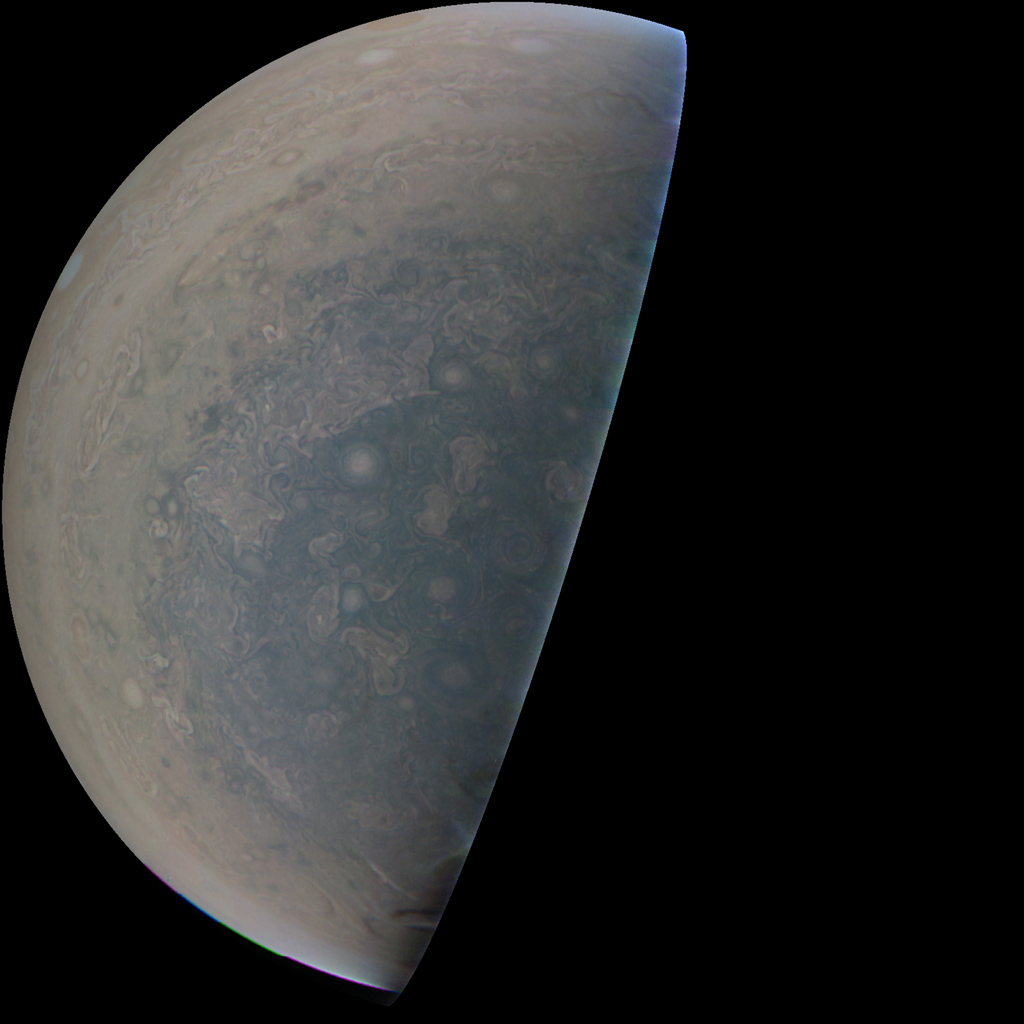Jupiter's 'Antarctica' Swirls in New Flyby Photo

NASA's Juno spacecraft caught this mesmerizing image of cyclones on Jupiter's south pole during a close flyby on Thursday, Feb. 2 — one specific "point of interest" that the public voted for.
The image was taken 47,600 miles (76,600 kilometers) above Jupiter. During the flyby, Jupiter approached much closer: to within 2,670 miles (4,300 km) of the planet's cloud tops, NASA officials said in a statement.
Juno imaged 10 particular user-selected locations over the course of the flyby (plus five supplementary locations), which were sorted by the number of votes each location received. "Jovian Antarctica" was the final spot that made the short list. Voting for locations during the next flyby, which is scheduled for March 27, will begin March 10.
The photo, taken by the JunoCam instrument, reveals multiple cyclones on the planet's south pole and oval storms out near the edge of the visible planet. Juno gathered data about the planet with all eight of its instruments, including an aurora mapper, JIRAM.
Besides choosing target locations, citizen scientists have been downloading and processing raw images of Jupiter that have been taken by JunoCam, whether the goal is scientific analysisor just wild artistic expression. Juno is currently orbiting Jupiter every 53.5 days — and with every close flyby, it gathers more information about the gas giant's gravitational and magnetic fields, atmosphere, weather and composition.
Email Sarah Lewin at slewin@space.com or follow her @SarahExplains. Follow us @Spacedotcom, Facebook and Google+. Original article on Space.com.
Get the Space.com Newsletter
Breaking space news, the latest updates on rocket launches, skywatching events and more!
Join our Space Forums to keep talking space on the latest missions, night sky and more! And if you have a news tip, correction or comment, let us know at: community@space.com.

Sarah Lewin started writing for Space.com in June of 2015 as a Staff Writer and became Associate Editor in 2019 . Her work has been featured by Scientific American, IEEE Spectrum, Quanta Magazine, Wired, The Scientist, Science Friday and WGBH's Inside NOVA. Sarah has an MA from NYU's Science, Health and Environmental Reporting Program and an AB in mathematics from Brown University. When not writing, reading or thinking about space, Sarah enjoys musical theatre and mathematical papercraft. She is currently Assistant News Editor at Scientific American. You can follow her on Twitter @SarahExplains.










